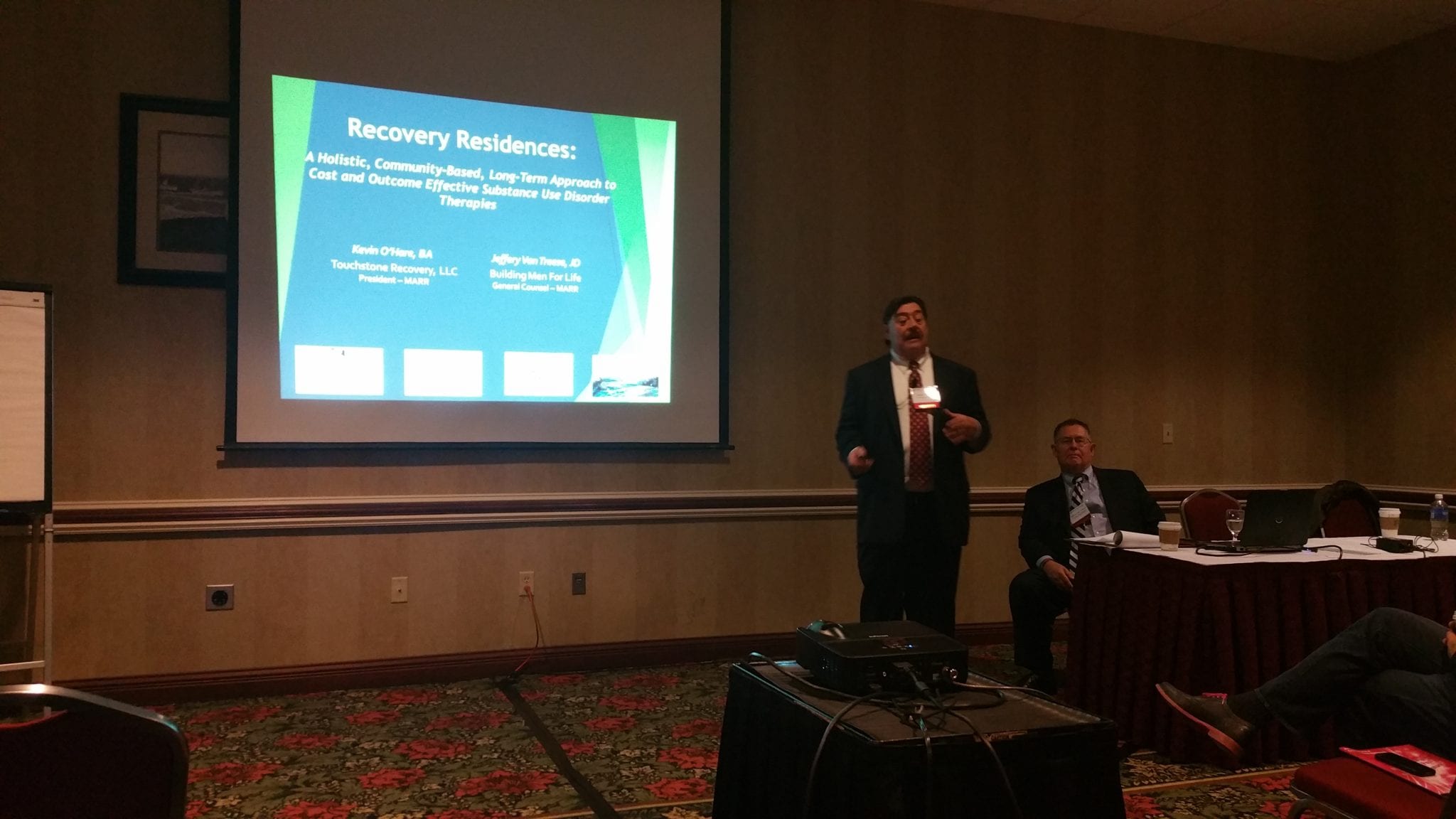The Michigan Association for Community Mental Health Boards, or MACMHB, held their Fall Conference this week at the Grand Traverse Resort in Traverse City, Michigan. We had the benefit of not having to get a hotel (our office is located a scant 15 minute drive away), and we were able to attain significant knowledge about mental health and addiction treatment from the people who live it everyday.
As a marketing agency, we took the time to pick out things that the mental health professionals found important, but didn’t often show up as important in their marketing messaging. Here are the key takeaways:
Takeaway 1: If You Have Long-Term Services, Show It

Clients need long exposure to treatment.
We went to Workshop 4: Recovery Residences: A Holistic, Community-Based, Long-Term Approach to Cost and Outcome Effective Substance Use Disorder Therapies presented by Kevin O’Hare, BA, CEO, Touchstone and Jeffery Van Treese, JD, Vice President, Michigan Association of Recovery Residences (MARR).
This workshop discussed recovery residences and the importance of treating addiction like a chronic disease. This was a stance that is not often brought up in addiction treatment facilities, often because they don’t provide long-term care or don’t believe in that stance.
However, based on the statistics that were provided, long-term chronic care is something that not only treatment facilities should provide (or refer to), but also push in their marketing. Recidivism rates for treatment are extremely high, and if long-term treatment plans are the statistical way to stop that, then it’s something to market towards potential clients.
Another great takeaway is the ability for clients to gain and retain jobs while in treatment. Many individuals suffering from addiction fear a loss of control and independence – that facilities are going to lock them away until they’re “all better”. By empathizing with the client in marketing, they can feel more comfortable that they’re not trading their freedom for sobriety.
Takeaway 2: It’s the Brain’s Fault, and Your Clients Should Know That

Facilities aren’t looking to change a person, but heal their disease.
We went to Workshop 14: Neurobiology of Substance Use Disorders: Understanding the Addicted Brain presented by: Kathleen Gross, Maritza Lagos, and Michael Liepman, all WMU Homer Stryker M.D. School of Medicine, Department of Psychiatry.
For this workshop, we learned about the reward cycle in the brain, and how, coupled with tolerance, addiction becomes something out of the addicted individual’s control. Both the addicted individual and family members might think that with enough willpower, they can overcome the addiction.
This isn’t the case, but that idea can be liberating for the client. They haven’t lost themselves to the addiction – they are just sick. By making addiction a chronic disease, it’s something for clients to fight against. They are not taking away a part of their identity – they are just getting help for a disease in a way someone with cancer would. They should not feel shame for their disease.
Marketing this is taking a stance, and it’s something that, despite the stigma of addiction, doesn’t show up that often among facilities. It’s a risk, but by doing something different from other facilities, you could stand to gain.
Takeaway 3: Clients Need to Know You Have Their Mental Health Covered

We talk about the addiction, but what about the underlying cause?
We went to Workshop 18: How to Fish and Hook the Co-occurring Client to be Invested in Treatment and Provide the Right Services presented by Mitch Rice, MA, LPC, CAADC, Co-occurring Disorders Therapist/Access Clinician, Pines Behavioral Health.
The topics discussed in this workshop revolved around clients who have multiple diagnoses, with one of those being addiction, and how to connect with those types of clients. Having a co-occurring disorder is so common that this is something that should be emphasized in a facility’s messaging.
This is the marketing Elephant in the Room among many addiction treatment facilities. Clients have a co-occurring mental health problem, such as depression, so often that it goes without saying that many addiction treatment facilities have the capability to handle a co-occurring diagnoses.
Clients don’t know this, though, but they would probably love to hear it. I often compare this stance to the UPS “Making Right-hand Turns” campaign. They had always been avoiding left-hand turns to be more fuel-efficient, but potential customers didn’t know that until they actually said so! It was a huge success without having to change anything about the company.
Conclusion
The big takeaway from all of these? The mental health professional know the previous takeaways to be true, but not many of them are telling it to these clients. It’s a significant gap that not only can help facilities, but can also help potential clients understand that their best interests are in mind.
